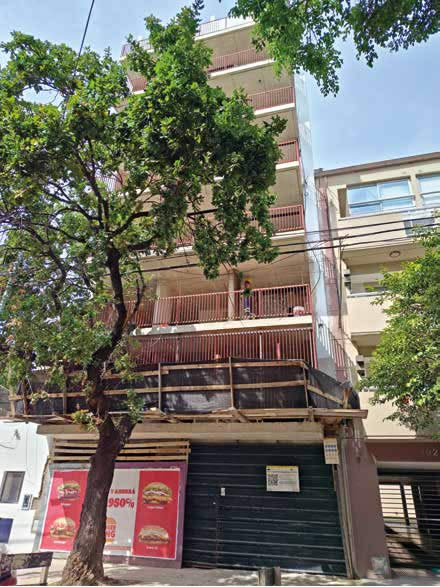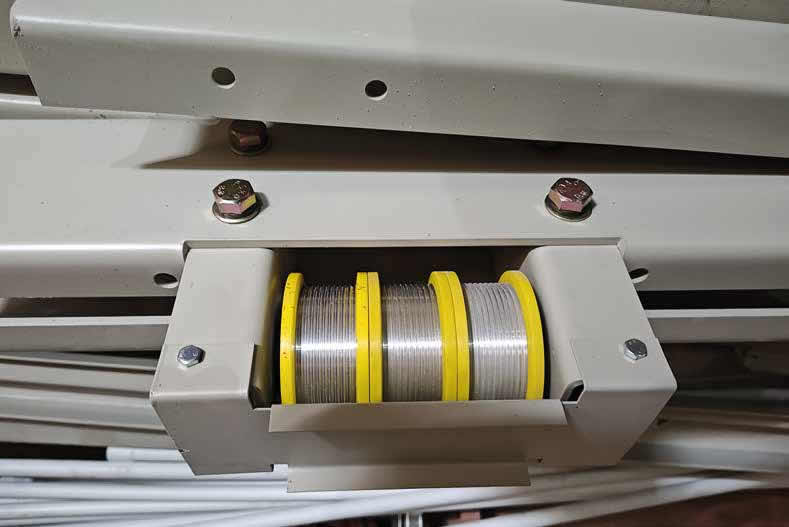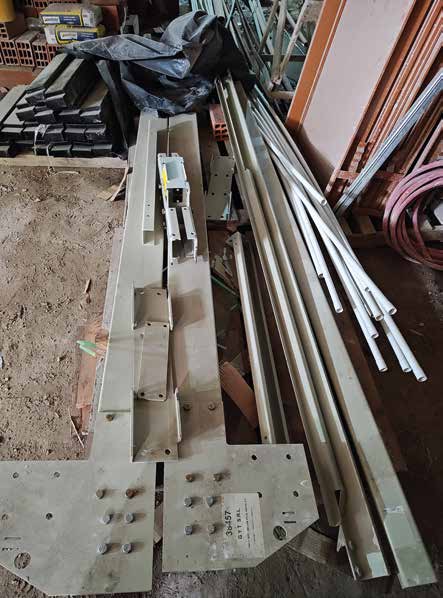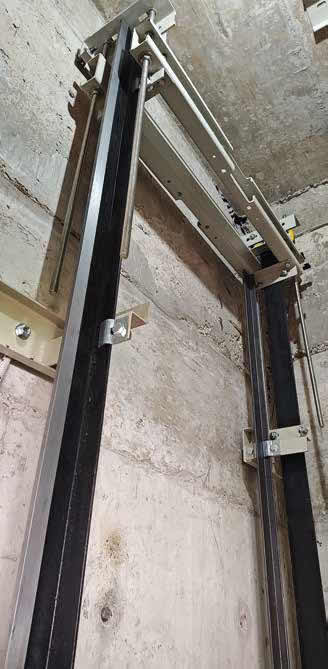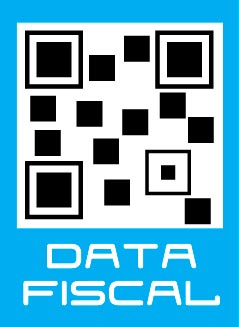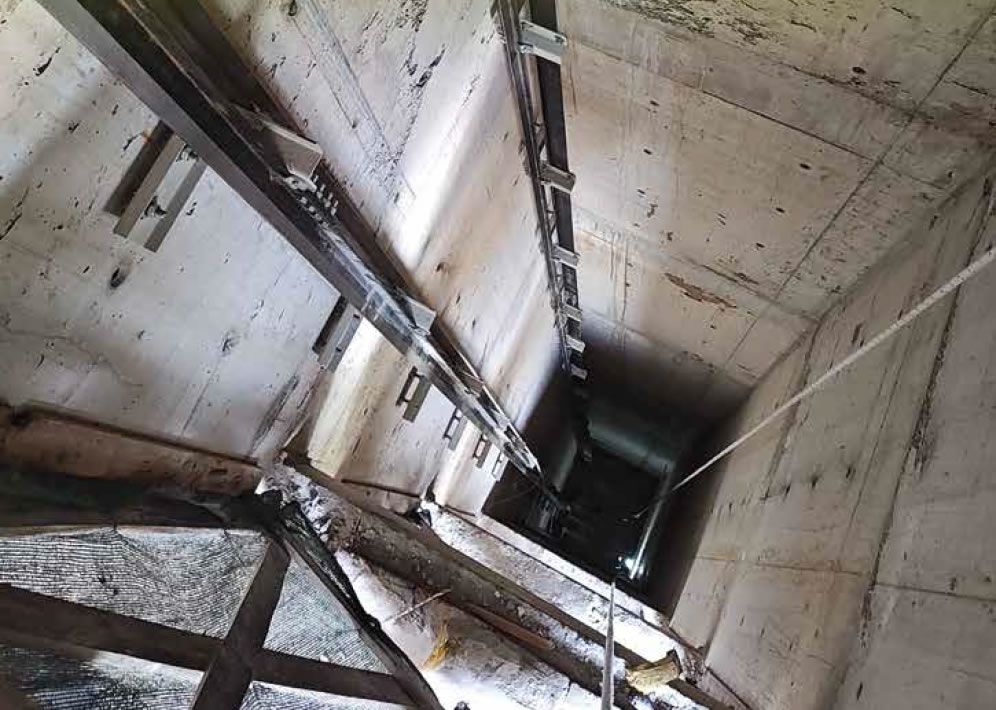
New technological foray
The company, considered among the most prestigious in the sector, installs, maintains, and modernizes. Founded by Guillermo López, CEO of the company and with a history of more than 30 years in the market, Ascensores del Plata has always focused on maintaining a high standard. For the last ten years is projected into avant-garde actions where cutting-edge technology is always the order of the day.
Unsurprisingly, Ascensores Del Plata is installing the first elevator without a machine room G & T brand in collaboration with its CEO, Alea Guillemí. Currently, the City government allows the installation of this type of elevator, which must be duly approved. “With the certification that G & T gave us when we purchased the product, we are authorized to carry out the installation,” explains Gabriel Giulietti, current president of Ascensores del Plata. G & T has provided us with the product and has collaborated in the direction of the work and on some specific issues. We are carrying out the installation with all our resources.”
The best standards
Gabriel Giulietti joined Ascensores del Plata in 2008 and today serves as its president. He trained as an electromechanical technician and began working in elevators as an intern at a secondary school. Later he received a degree in Safety and Hygiene. He worked at Otis, like Guillermo López, but in other times, and there, from 2001 to 2008, he dedicated himself to being a repair technician, technical representative, safety and hygiene manager, and commercial advisor.
This background has given him a vision and a business profile that he has applied to Ascensores del Plata. “Guillermo and I form a dynamic duo,” says Giulietti, “where we both produce ideas and see how we articulate them to carry them out.”
In 2015 they obtained the ISO 9001 Certification for Maintenance and Repair and they renewed it a few weeks ago.
A foray into new technology
Revista del Ascensor:- Can we consider this a new technological foray for Ascensores del Plata?
Gabriel Giulietti: -Yes, it is the first elevator of this type that we are installing, an 8-stop elevator in a building on Pacheco Street at 1900, in Villa Urquiza. The novelty is that it does not use the traditional steel cables, which is usual in the MRL installed in Buenos Aires, but the traction belt.
R del A.: – What are the advantages the belt offers?
G.G.: – It is silent, it runs smoothly, it has very low maintenance and it does not need lubrication. It has a small diameter pulley. The belt, unlike the steel cable, does not need the pulley to be 40 times larger than the diameter so that the wire does not flex and becomes kinked. Let us think that for a half-inch cable a 50 cm pulley is needed. Since the belt does not need this, the pulley can be 15 cm in diameter, which results in a reduction in space and weight and that allows avoiding the machine room.
R del A.: – How long does it take to install a standard elevator, and one without a machine room?
G.G.: – The duration is more or less similar, the stages of construction are the same, and the issue is the reliability and the service that one and the other provide. To install it is the same as a conventional elevator: The overruns, the height and the dimensions of the passage are the same.
R del A.: – This will imply less maintenance and a change in the work of companies.
G.G.: – It is impossible to try to stop technological progress. This is aimed at having fewer points of failure; an elevator that does not require as much maintenance is an elevator whose safety conditions will be maintained high and for longer.
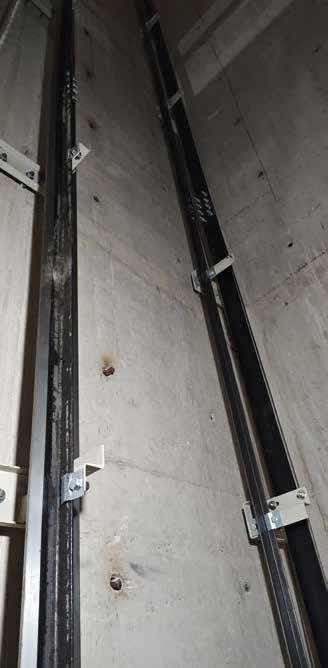
G.G.: – They can be installed in an existing building; what needs to be done in this case is an engineering development to see if the conditions of the hoist are suitable. The difference with a common elevator is that the G & T system, without a machine room, is installed with an entire frame that must be anchored to a concrete wall; it cannot be installed in a brick wall.
R del A.: – Going to the mythology that raised around the elevator without a machine room, is it difficult to rescue people? Another point would be the ease of maintenance and repair.
G.G.: – These elevators use UPS technology (Uninterruptible Power Supply); most likely, if there is a power cut, there will be an automatic self-rescue and the cabin will go up or down to the nearest floor and open its doors. And if the rescue requires the intervention of a technician, from the same control on the top floor he has all the elements to mechanically control the machine, release the brake and allow the machine to go up or down depending on the sway of the cabin. There are no difficulties in carrying out maintenance or repairs.
R del A.:- These elevators are silent, right?
G.G.:- They are very silent. The motor rotor turns at very low speeds. Since it is on the same axis as the pulley, it cannot operate at 1500 rpm because that would be an ultra-fast elevator; it is mounted on bearings with the motor insulated from the structure and the belt. There is an advantage in every aspect.
PRESENT
Gabriel Giulietti notes that recently a period of greater stability, greater foresight, and a slight improvement in the economy has begun. With the calm, he says, people are encouraged to invest in repairing and modernizing their elevators. Last year the company acquired a batch of elevators from a small but traditional company, which increased the fleet by 10%. It is about 360 machines, some of them in emblematic locations (an example of this is the note on the installation of an elevator in the Irizar Icebreaker repaired after its fire, which was the cover story in issue Nº 121 of Revista del Ascensor). Giulietti comments with conviction that “People invest in elevators lately, especially when they are told that by making the necessary repairs or modernizations, they will have an elevator for 20 more years.”
R del A.: – Regarding staff training, do you give courses at the company?
G.G.: – Yes, of course. We give safety and hygiene courses, which I teach, and we give technical courses; In December, we finished a two-month course that covered technical aspects of electromechanical controls, which are disappearing in favor of electronic ones. But we also invest in teaching new operators whom we prepare to increase the technical staff. It is an investment we made it as a bet, thinking that by offering those good working conditions, will keep them loyal to our company.
PROJECTS FOR 2025
R del A.: – What is the project for this year?
G.G.: – Starting with the installation of the G & T elevator, the aim is to migrate from the common electromechanical to the one without a machine room; the idea is to change the technology in buildings that are not high-rise. To do this, we also plan to continue with our line of technical and commercial advice that continues to give us good commercial results. With this new product and all the advantages, we can offer to architectural firms, we believe that the MRL facilities will increase.
In terms of maintenance and modernization, we started last year with our workshops that consist of presentations on different technical, legal, safety, and hygiene aspects. The meeting was a success; we filled the hall of the Hotel Dorá. Administrators, mayors of the Justice Department, and officials from the elevator sector of DGFYCO attended. Information was provided that not everyone knew. This year we plan to repeat the experience and improve it, if possible.
R del A.: – We believe that if we think about technological progress,we cannot help but ask you about Artificial Intelligence and its application in vertical transport. What do you think about that?
G.G.:- That it is inevitable for the good and the bad. I have to confess that I did a test asking AI for a report and I was stunned by the result: The efficiency, precision, and organization of the report exceeded any expectations, which made me think a lot about human intelligence, and made me fear its obsolescence. The question is: What will become of it if we leave everything to something or someone to solve things for us. Aren’t we losing control of things a bit? But now speaking specifically, I think there is very little implemented and developed in this area, if we talk about our country, only a few pioneers are involving AI in elevators. However, they are mainly doing it for the making of reports, not for the technical part yet.
Anyway, fears aside, I think it is a very powerful tool for the vertical transport sector, too much interesting, too much necessary, which we will have to e incorporate into our activity soon.
R del A.: – Do you think that AI can solve the calculation and design of the management of the installation of an elevator today?
G.G.: -I think so. There is already a BIM system that digitally designs an installation within a given building, I order to foreseen actions to avoid possible future errors and allowing us to correct them. In addition, that, if it is not AI, is very similar to it. Ascensores del Plata will surely incorporate it in everything possible and convenient, especially because AI supports the policy that we have been carrying out for some years with the quality of service and the standardization of processes.
CONCLUSION
R del A.: – Finally, Gabriel, we want to ask you, what result are you looking for when applying these construction procedures?
G.G.: – The results of applying all the latest technology are aimed at improving management in all its aspects, making it better, faster, more precise, and more efficient in all areas of that management. I must say without modesty that the quality of our clients is a reflection of the quality of our management.
—
Photo: Gabriel Giulietti.
